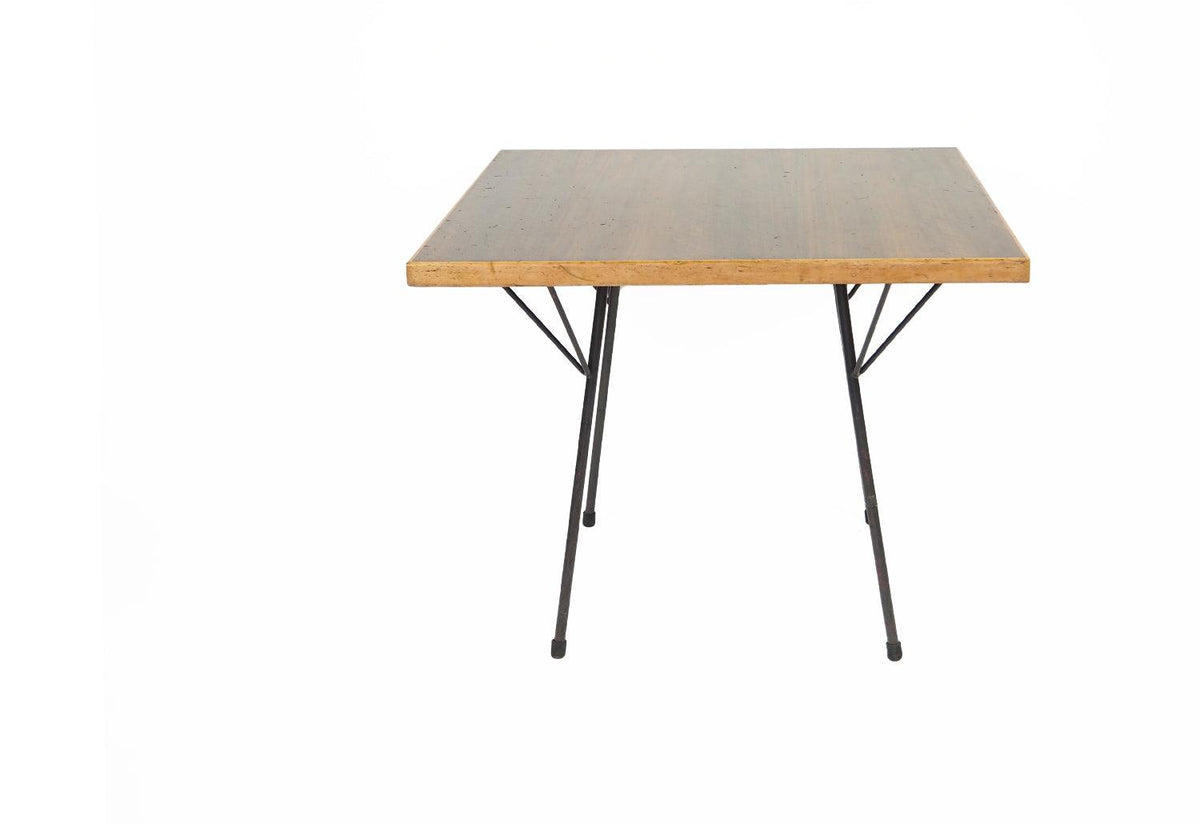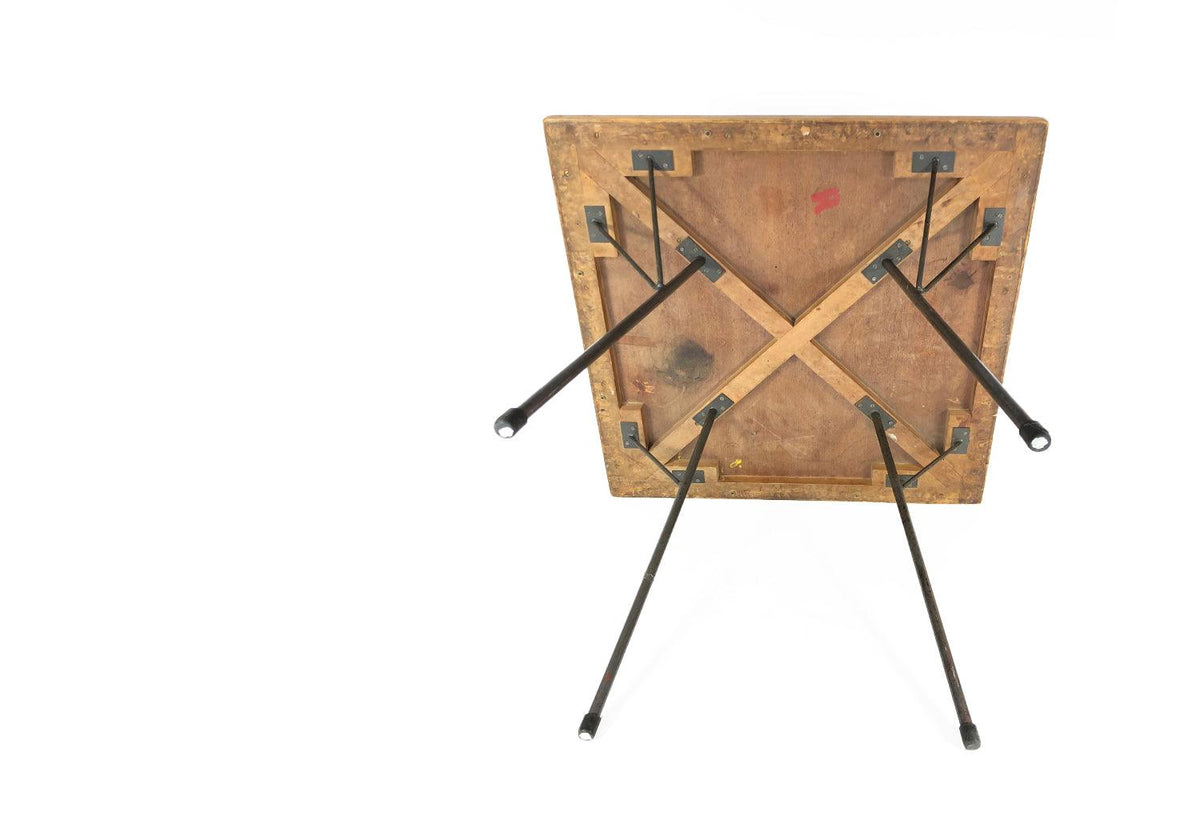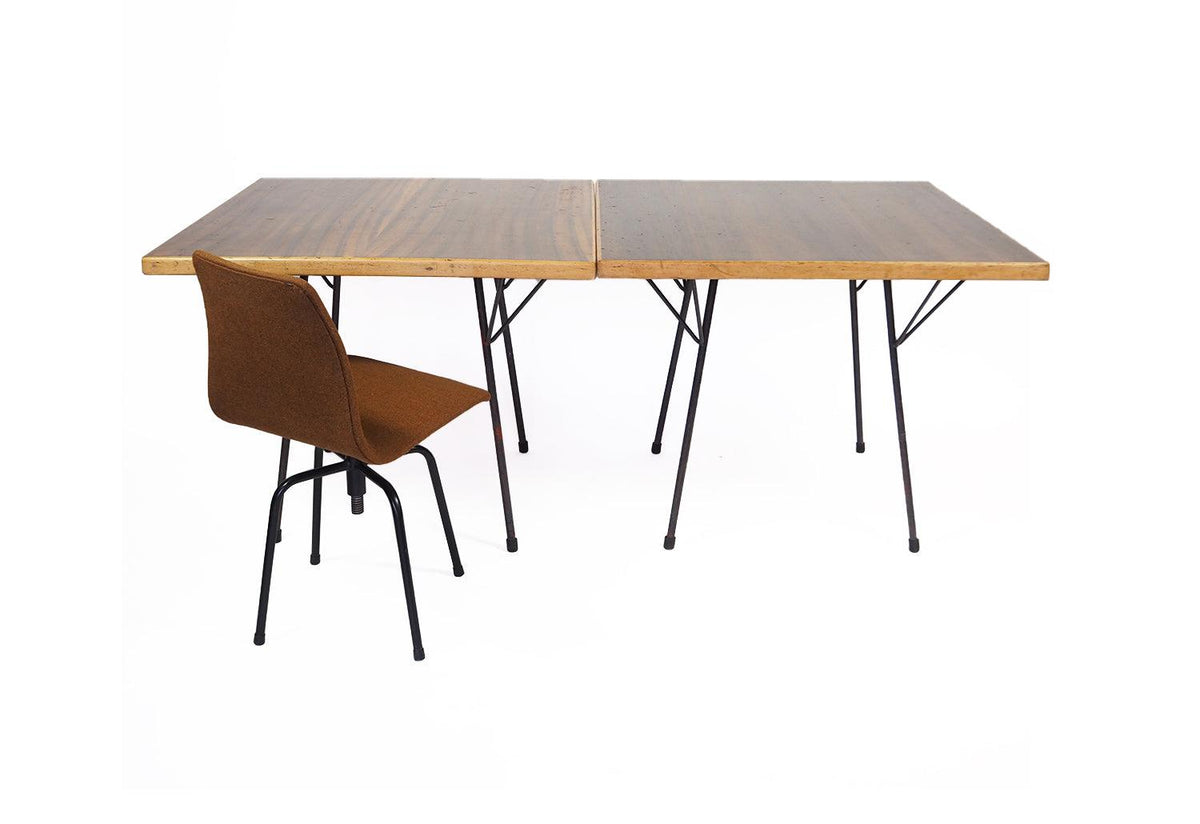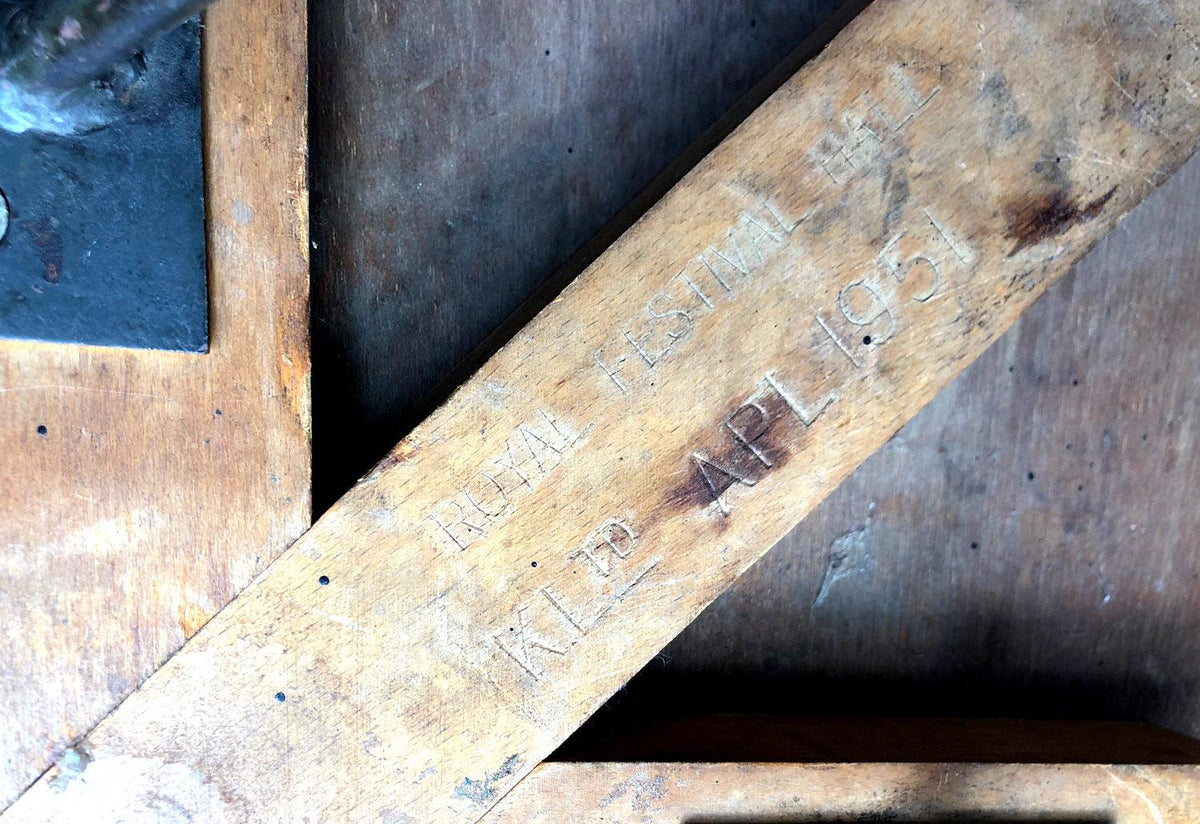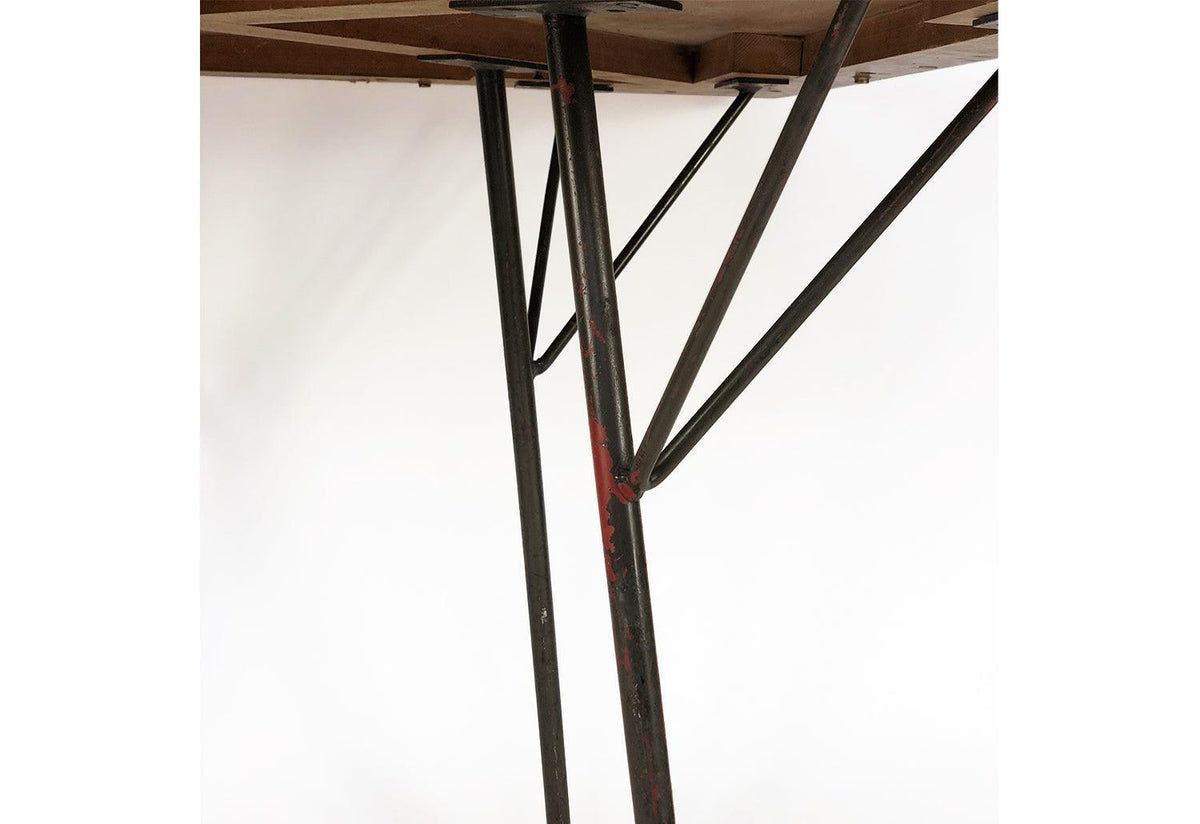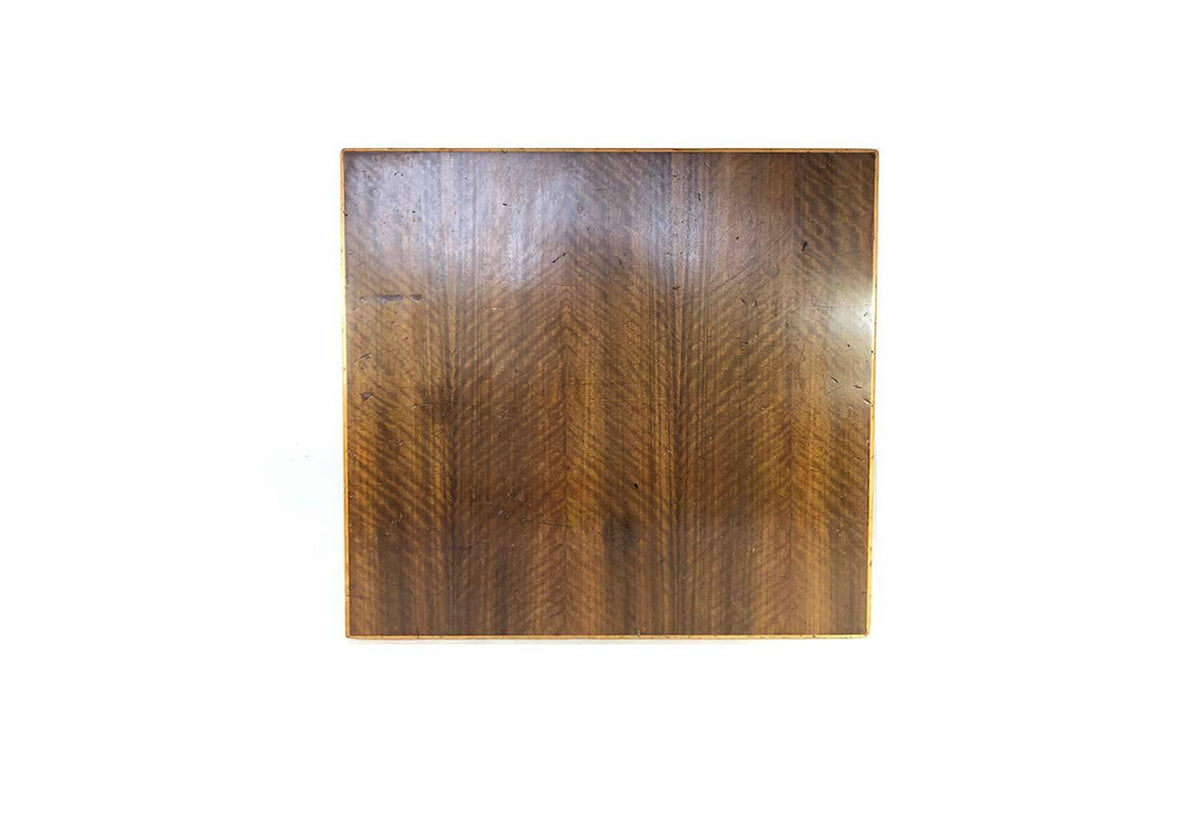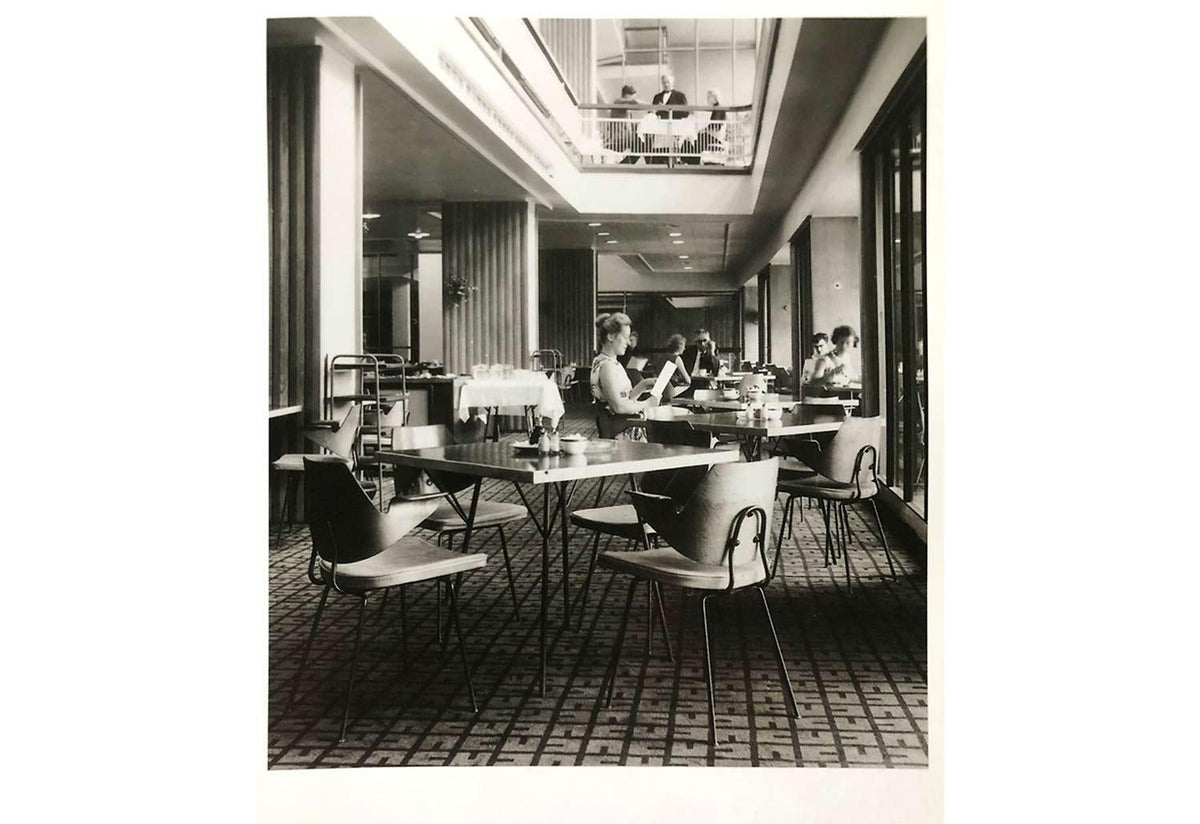Robin Day, Royal Festival Hall table, 1951
Royal Festival Hall table by Robin Day
Robin Day was awarded the highly significant commission to design furniture for the Royal Festival Hall almost immediately following his success in the Museum of Modern Art competition.
The Royal Festival Hall represented the first modern public building to be constructed after the war, and formative in the South Bank redevelopment. It was a large and complex building, demanding a host of visitor and user needs.
Peter Moro was part of the team of architects for the building and oversaw the interior specifications. Robin Day was assigned the challenge to design for the concert hall, orchestra and public seating for restaurants, foyer, and terraces.
His seating designs for the free-flowing public areas and restaurants are now recognized as landmarks in the history of modern furniture and examples of the sophisticated and progressive plywood group are held in museum collections worldwide.
The dining table created to complement the seating was equally modern in aesthetic and function. The lightweight leg structure echoed that of the chairs, reflecting the open and light spaces of the building and allowing the deep top to apparently float in a similar manner to the sculptural plywood backs of the seating.
Both round and square designs were created for the building, with outdoor versions employed on the terraces.
The pioneering furniture designs formed an integral part of the modernistic architectural design of the Royal Festival Hall and were influential in the integration of contemporary design in the post-war era.
The progressive auditorium seating remains in use to this day, and whilst the orchestra chairs were refurbished several times, the majority of the original furniture was destroyed or disposed of by London County Council.
Vintage
This is a one off vintage item that is also on display in store. Therefore it can only be purchased once availability has been confirmed. If you wish to purchase please call 020 7288 1996 or enquire.
Trade Professional?
Get in touch for trade pricing, project management and consolidated deliveries.
Description

Royal Festival Hall table by Robin Day
Robin Day was awarded the highly significant commission to design furniture for the Royal Festival Hall almost immediately following his success in the Museum of Modern Art competition.
The Royal Festival Hall represented the first modern public building to be constructed after the war, and formative in the South Bank redevelopment. It was a large and complex building, demanding a host of visitor and user needs.
Peter Moro was part of the team of architects for the building and oversaw the interior specifications. Robin Day was assigned the challenge to design for the concert hall, orchestra and public seating for restaurants, foyer, and terraces.
His seating designs for the free-flowing public areas and restaurants are now recognized as landmarks in the history of modern furniture and examples of the sophisticated and progressive plywood group are held in museum collections worldwide.
The dining table created to complement the seating was equally modern in aesthetic and function. The lightweight leg structure echoed that of the chairs, reflecting the open and light spaces of the building and allowing the deep top to apparently float in a similar manner to the sculptural plywood backs of the seating.
Both round and square designs were created for the building, with outdoor versions employed on the terraces.
The pioneering furniture designs formed an integral part of the modernistic architectural design of the Royal Festival Hall and were influential in the integration of contemporary design in the post-war era.
The progressive auditorium seating remains in use to this day, and whilst the orchestra chairs were refurbished several times, the majority of the original furniture was destroyed or disposed of by London County Council.
Dimensions

91w x 91d x 73cmh
Materials

The thick tops also employed a contrasting dynamic to complement the chairs, using a blonde birch lipping to the figured walnut veneered surface.
Functionality was a key aspect in the table design. The thick, solid edge would also provide a robust wearing surface. Whilst the slightly splayed corner-placed legs used triangulated supports to ensure stability and minimal movement.
The extremely rare examples are stamped and dated. The tops have been lightly restored and cleaned to bring back tone and figuring, but reflect the use and patina acquired since 1951. The legs and fixings all remain entirely original.
Product Downloads

Help / Advice

-
Call: 0207 837 1900
-
Email: showroom@twentytwentyone.com
-
Chat: here

